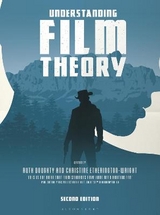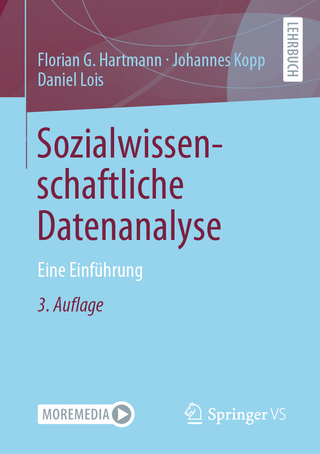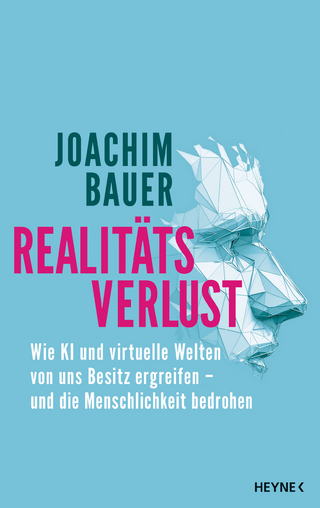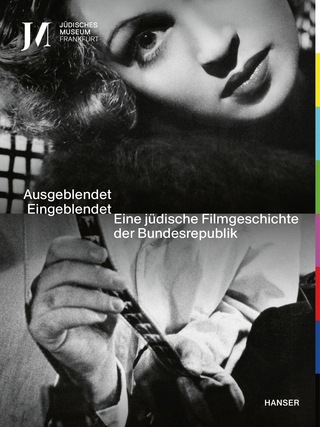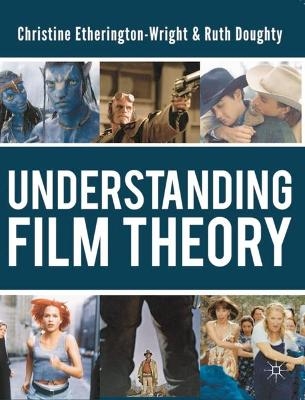
Understanding Film Theory
Palgrave (Verlag)
978-0-230-21710-2 (ISBN)
- Titel erscheint in neuer Auflage
- Artikel merken
Alison L. McKee, Assistant Professor, Department of Television-Radio-Film-Theatre, San Jose State University, USA
'This is the book that film students have long been waiting for: a clear, well-written and accessible introduction to film theory. Lucid theoretical exposition and case study film analysis offer readers the most intelligible summary of theory that I have yet encountered.'
Paul Sutton, Head of Media, Culture and Language, Roehampton University
Film theory has a reputation for being difficult. It is challenging, it takes time and it can frequently leave students feeling inadequate and frustrated. Furthermore, theory can often seem intimidating and oldfashioned and therefore it can be difficult to appreciate its modern-day relevance. Understanding Film Theory aims to disassociate theory from these negative connotations and bring a fresh, modern and accessible approach to the discipline. Each of the fifteen chapters provides an insight into the
main areas of debate by introducing key ideas and thinkers. Taking the application of theory as its central theme, the book incorporates a number of exciting and innovative features: 'Reflect and Respond' sections encourage readers to engage critically with theoretical concepts, while seminal texts are concisely summarized without oversimplifying key points.
Throughout the book the authors illustrate why theory is important and demonstrate how it can be applied in a meaningful way, with relevant case studies drawn from both classic and contemporary cinema including: Once Upon a Time in the West (1968), Run Lola Run (1998), Moulin Rouge! (2001), Rabbit-Proof Fence (2002), Old Boy (2003), Brokeback Mountain (2005), Mamma Mia! (2008) and Avatar (2009). Additional case studies address key genres ('swashbucklers' and the film musical), film movements (Dogme 95), individual actors (Christian Bale, Judi Dench and Amitabh Bachchan) and directors (Alfred Hitchcock and Guillermo del Toro).
Understanding Film Theory is an accessible and comprehensive introduction to film theory. It is the ideal entry point for any student studying film, using clear definitions and explaining complex ideas succinctly.
Christine Etherington-Wright is a Senior Lecturer in Film Studies at University of Portsmouth (UK) where she teaches a course on Film Theory. She is the author of Gender, Professions, Discourse (Palgrave, 2008).
Ruth Doughty is a Senior Lecturer in Film Studies at University of Portsmouth (UK). She is one of the co-founding editors of the journal Transnational Cinemas and co-edited Sound and Music in Film and Visual Media (2008).
CHRISTINE ETHERINGTON-WRIGHT is a Senior Lecturer in Film Studies at University of Portsmouth (UK) where she teaches a course on Film Theory. She is the author of Gender, Professions, Discourse (Palgrave, 2008). RUTH DOUGHTY is a Senior Lecturer in Film Studies at University of Portsmouth (UK). She is one of the co-founding editors of the journal Transnational Cinemas and co-edited Sound and Music in Film and Visual Media (2008).
Acknowledgments.- .- Introduction.- .- Chapter 1: Auteur.- Case studies: Alfred Hitchcock and Guillermo del Toro.- .- Chapter 2: Genre.- Case studies: The Swashbuckler and the Musical.- .- Chapter 3: Formalism.- Case study: Run Lola Run/ Lola Rennt (Tom Tykwer, 1998).- .- Chapter 4: Structuralism and Post-structuralism.- Case study: Once Upon a Time in the West (Sergio Leone, 1968).- .- Chapter 5: Marxism.- Case study: Latin America: Third Cinema and Imperfect Cinema.- .- Chapter 6: Realism.- Case study: Dogme 95.- .- Chapter: 7 Postmodernism.- Case study: Moulin Rouge! (Baz Luhrmann, 2001).- .- Chapter 8: Psychoanalysis.- Case study: Oldboy (Chan-Wook Park, 2003).- .- Chapter 9: Feminism.- Case study: Mamma Mia! (Phyllida Lloyd, 2008).- .- Chapter 10: Masculinity.- Case study: Christian Bale.- .- Chapter 11: Queer Theory.- Case study: Brokeback Mountain (Ang Lee, 2005).- .- Chapter 12: Audience Research and Reception.- Case study: Violence.- .- Chapter 13: Stars.- Case studies: Amitabh Bachchan and Judi Dench.- .- Chapter 14: Race and Ethnicity.- Case study: Rabbit-Proof Fence (Philip Noyce, 2002).- .- Chapter 15: Postcolonial and Transnational Cinemas.- Case study: Avatar (James Cameron, 2009).- .- Conclusion.- .- Filmography.- .- Index.
| Erscheint lt. Verlag | 17.8.2011 |
|---|---|
| Zusatzinfo | 304 p. |
| Verlagsort | Basingstoke |
| Sprache | englisch |
| Maße | 189 x 246 mm |
| Themenwelt | Kunst / Musik / Theater ► Film / TV |
| Geisteswissenschaften | |
| Sozialwissenschaften ► Kommunikation / Medien ► Medienwissenschaft | |
| ISBN-10 | 0-230-21710-9 / 0230217109 |
| ISBN-13 | 978-0-230-21710-2 / 9780230217102 |
| Zustand | Neuware |
| Haben Sie eine Frage zum Produkt? |
aus dem Bereich
